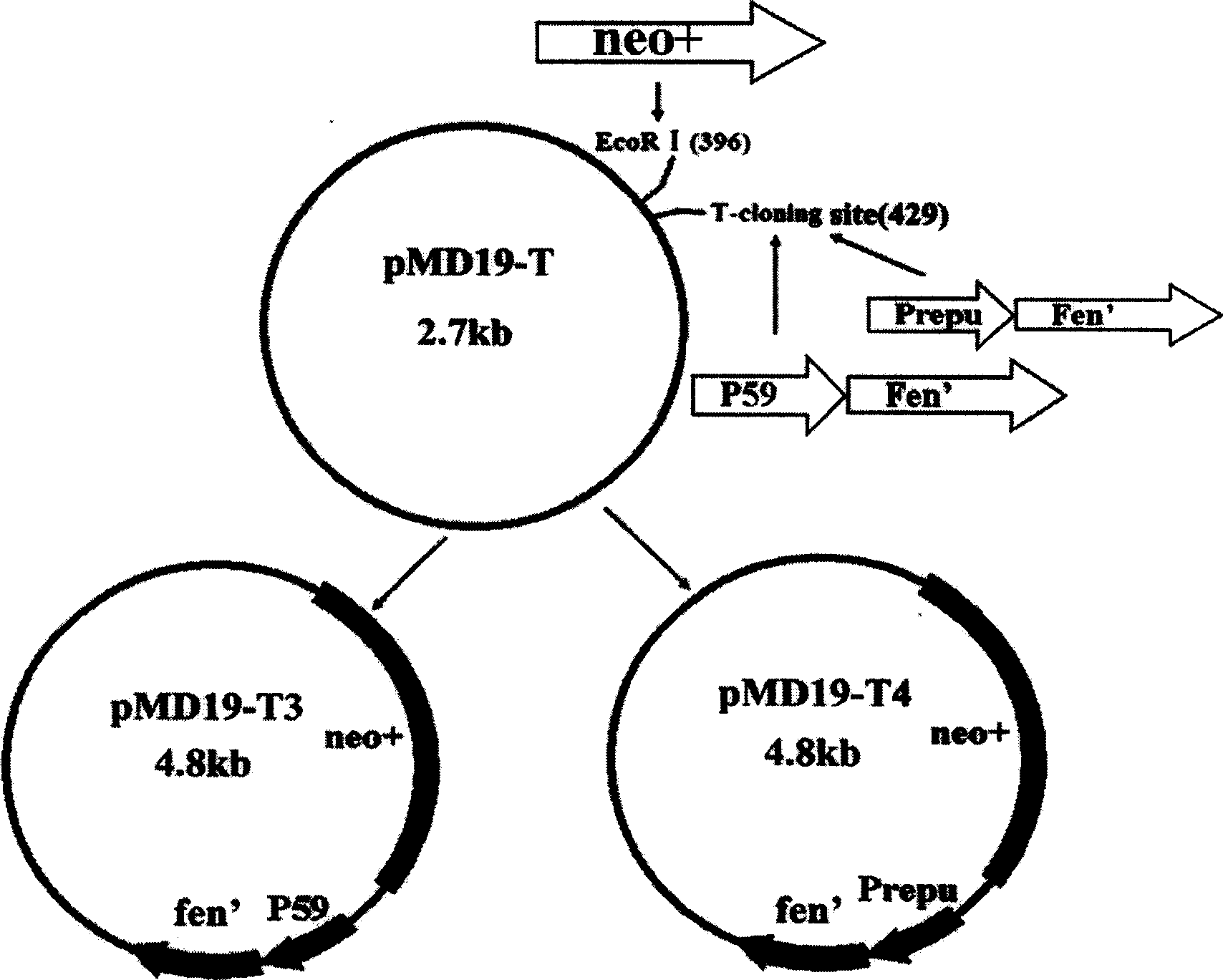Promoter replacement method for improving Bacillus amyloliquefaciens yield
A technology of bacillus and starch liquefaction, applied in the biological field, can solve the problem of low production of antimicrobial peptides
- Summary
- Abstract
- Description
- Claims
- Application Information
AI Technical Summary
Problems solved by technology
Method used
Image
Examples
Embodiment Construction
[0043] The realization of the present invention is by cloning a homologous fragment (containing promoter Ppps) of a synthetase gene fenA of a synthetase gene fenA of fengycin of Bacillus amyloliquefaciens ES-2 genome DNA, and this fragment is passed SOE PCR method and start Sub P 59 Ligated, and the fragments connected together were cloned into the plasmid pMD19-T to obtain the plasmid pMD19-T1, and finally the neomycin resistance gene was connected to the EcoR I restriction site of the plasmid pMD19-T1 as a selection marker, thereby A homologous integration vector pMD19-T2 was constructed. And the homologous integration vector was transformed into Bacillus amyloliquefaciens ES-2, and a strain with strong promoter replacement was obtained. Detection of fengycin by the Oxford cup method and high performance liquid chromatography to identify the substitution strain with increased yield.
[0044] (1) Promoter P 59 sequence cloning
[0045] The constitutive promoter P was ampl...
PUM
 Login to View More
Login to View More Abstract
Description
Claims
Application Information
 Login to View More
Login to View More - R&D
- Intellectual Property
- Life Sciences
- Materials
- Tech Scout
- Unparalleled Data Quality
- Higher Quality Content
- 60% Fewer Hallucinations
Browse by: Latest US Patents, China's latest patents, Technical Efficacy Thesaurus, Application Domain, Technology Topic, Popular Technical Reports.
© 2025 PatSnap. All rights reserved.Legal|Privacy policy|Modern Slavery Act Transparency Statement|Sitemap|About US| Contact US: help@patsnap.com



